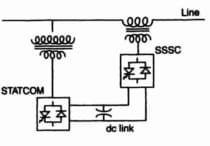 |
| Basic Electronics |
1. In an intrinsic semiconductor__________.
a. There are no electrons in the material
b. Electrons in the material are neutralized by holes
c. The number of holes is too small
d. There are no holes in the material
2. Which one of the following statements is correct ? If the Fermi level lies midway between the conduction and valence bands, then the semiconductor is_______.
a. p-type
b. n-type
c. Intrinsic
d. Extrinsic
3. With an increase in temperature, the Fermi level in an intrinsic semiconductor_________.
a. Remains at the centre of the forbidden gap
b. Moves into conduction band
c. Moves closer to the valence band edge
d. Moves closer to the conduction band edge
4. An intrinsic semiconductor at a temperature of absolute zero behaves like an insulator because of__________.
a. Non-availability of free electrons
b. Low drift velocity of free electrons
c. Non-recombination of electrons with holes
d. Low(almost zero) electron energy
5. In an intrinsic semiconductor, the mobility of electrons in the conduction band is_________.
a. Greater than the mobility of holes in the valence band
b. Equal to mobility of holes in the valence band
c. Less than mobility of holes in the valence band
d. Zero
6. In a semiconductor, the movement of holes is due to___________.
a. Movement of holes in valence band
b. Movement of electrons in valence band
c. Movement of electrons in conduction band
d. Movement of holes in conduction band
7. Major part of the current in an intrinsic semiconductor is because of__________.
a. Holes in the valence band
b. Thermally generated electrons
c. Conduction band electrons
d. Valence band electrons
8. There is no hole current in good conductors because they_________.
a. Are full of electron gas
b. Have large forbidden energy gap
c. Have no valence band
d. Have overlapping of conduction and valence bands
9. Mobility of electrons and holes_______.
a. Varies with both temperature and electric field intensity
b. Varies with electric field intensity alone
c. Varies with temperature alone
d. Remain constant irrespective of temperature and electric field intensity
10. The resistivity of a metal is a function of temperature because________.
a. The electron density varies with temperature
b. The amplitude of vibration of atoms varies with temperature
c. The electron gas density varies with temperature
d. All of the above
11. The electrical conductivity of a semiconductor increases with increase in temperature because________.
a. Thermal energy of electrons increases
b. The mobility of the carriers increases
c. The carrier concentration increases
d. Both carrier concentration and mobility increase
12. The bandgap of Silicon at room temperature is_______.
a. 0.7 eV
b. 1.1 eV
c. 1.3 eV
d. 1.4 eV
13. Which of the following has the greatest mobility ?
a. Hole
b. Electron
c. Positive ion
d. Negative ion
14. Mobility is defined as________.
a. Number of free electrons/number of bound electrons
b. Displacement per unit field
c. Drift velocity per unit field
d. Diffusion velocity per unit field
15. Mobility of electron is highest in_________.
a. C
b. GaAs
c. Ge
d. Si
16. In a semiconductor material doping is done to_________.
a. All the crystal structure of the pure semiconductor
b. Make semiconductor less than 100% pure
c. Change the chemical properties of semiconductor
d. Decrease the number of charge carriers
17. n-type silicon is obtained by doping silicon with________.
a. Phosphorous
b. Boron
c. Aluminium
d. Germanium
18. Which of the following will serve as a donor impurity in silicon ?
a. Antimony
b. Germanium
c. Indium
d. Boron
19. N-type semiconductors_________.
a. Are produced when phosphorus is added as an impurity to silicon
b. Are produced when indium is added as an impurity to germanium
c. Are negatively charged
d. None of the above
20. An N-type semiconductor as a whole is___________.
a. Electrically neutral
b. Positively charged
c. Negatively charged
d. Positively or negatively charged depending on doping
21. In P-type semiconductor, there are_________.
a. Immobile negative ions
b. Immobile positive ions
c. Electrons as majority carriers
d. No majority carriers
22. In N-type semiconductor, there are_________.
a. Holes are majority ions
b. No majority carriers
c. Immobile negative ions
d. Immobile positive
ions
d. Acquire negative charge
b. Half-way between the
conduction band and the valence level
c. Below the donor level
25. The effect of doping intrinsic semiconductor is to_________.
a. Keep the Fermi level at the middle of the forbidden band
b. Change the crystal structure of the semiconductor
c. Move the Fermi level towards the centre of the forbidden band
d. Move the Fermi level
away from the centre of the forbidden band
c. Into the conduction band
d. Into the valence band





0 Comments
If you have any doubt, feel free to ask.